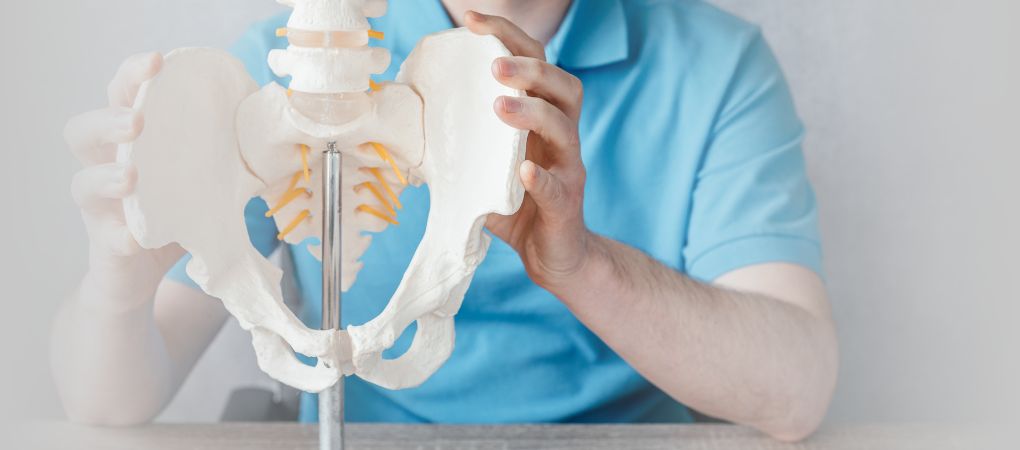Francesca Galiano
|
27/09/2022 - Last update 28/12/2022
David B. Fuller | Year 2020
Osteopathic Approach to the Treatment of a Patient With Idiopathic Iliohypogastric Neuralgia
Pathology:
Idiopathic iliohypogastric neuralgia
Type of study:
Case Report
Date of publication of the study’:
2020/Dec/01

Purpose of the study
- Objective: to report the effect of OMT in a patient with idiopathic iliohypogastric neuralgia
- Measured outcomes: report of the symptomes
Participants
- Number: 1
- Description: a 72-year-old woman with a severe and burning right-lower-quadrant abdominal pain with unknown etiology (on which doctors, gastroenterologists, gynecologists and surgeons expressed different opinions) for the last 2 years. The pain manifested randomly, waking her up at night and consisting of attacks of 20-60 minutes. The pain never crossed the midline and rarely occurred behind the iliac crest. The anterior abdominal area was not tender to the touch. Pelvis ultrasound was normal, hepatic steatosis and possible diverticulosis detected by computed tomography, normal colonoscopy, mild lateralization of the lumbar curve (convex left) with disc space narrowing.
4 months before the visit she had undergone an exploratory laparoscopy and appendectomy which improved the symptoms for 2 months; however, the pain then returned and it was worse than before surgery. Her medical history included a mild stroke 10 years earlier (with no residual deficits), hypertension, hyperlipidemia, narrow-angle glaucoma, gastroesophageal reflux, benign breast mass (checked by biopsy), rotator cuff tear (with repairing surgery), cataracts (with extraction and lens implantation), macular degeneration and osteopenia. She had occasionally had low back pain, but not recently.
At the time of the visit the patient was taking ramipril, esomeprazole, hydrochlorothiazide, naproxen, atorvastatin, hyoscyamine and low-dose aspirin. On physical examination, the patient appeared to be healthy and fit, with easy breathing and normal neurological and musculoskeletal tests. Osteopathic evaluation reported decreased lumbar mobility, anterior hip rotation, bilaterally extended sacrum, bilaterally restricted psoas muscles, and fascial restriction of the right lower abdomen and linea alba. Therefore, a presumptive diagnosis was defined of right iliohypogastric neuralgia with lumbar, pelvic, sacral and lower limb somatic dysfunctions.
Interventions and evaluations
- Multiple sessions of OMT (20 treatments in total administered approximately as follow: 2 a week apart, then fortnightly for about 3 months, then monthly for 5 months, then once after 3 months and finally 2 every 6 months)
- Personalized OMT with balanced ligamentous tension and ligamentous articular strain techniques, myofascial, muscle energy and Fulford percussor techniques
- Home exercises involving pelvic rotation, psoas muscles and adductors of the thigh
- α-lipoic acid supplementation (200mg daily) for neuralgia
- Insole to the left foot
Results
1 week after the first visit the abdominal pain improved and the somatic dysfunctions showed a lesser asymmetry.
During the following 3 months (including 10 treatments), the symptoms continued to improve: in particular, the period of time during which the patient remained painless increased as she received more OMT interventions. The pain in particular had become minimal and in the abdomen remained a sort of mild paresthesia.
Following 2 weeks in which she had to stand for a long time, the patient had a worsening of abdominal pain, which was followed by the prescription of an insole for the left foot as an X-ray showed a sacral base unlevelling (“short leg syndrome”). Not having used the insole at first, a radiant pain at the back of the right thigh and at the lateral knee followed immediately, the pain derived from lumbar degenerative changes. By starting using the insole, however, the situation began to improve.
The following OMT interventions resulted in almost complete resolution of abdominal pain, taking into account that the thickness of the insole was increased as a certain pelvic asymmetry remained. Due to a hip fracture for which she had to wear a hip immobilizer, the pain in the abdomen temporarily returned in association with an altered gait.
Afterwards, the patient reported feeling well, apart from some occasions when she did not wear the insole for 1 or 2 days.
Discussion
OMT showed to be able to act quickly on pain most likely due to myofascial changes in the iliac crest and lower abdomen (the pain dropped by 80% within 6 sessions).
It is possible that the patient had a “double crush syndrome“, that implies that more points in which the nerves deriving from the T12-L2 segments were compressed, which could explain the various symptoms emerged over time, symptoms also depending on the posture variation.
The review of Osteopedia
By Marco Chiera
Strengths: very accurate description of the medical history, of the results of physical and osteopathic evaluations, of the treatment and of the progress of the condition over time
Limits: Although initially OMT influenced positively the resolution of pain it is difficult to evaluate whether it was the OMT or the insole that mostly contributed to the patient’s health at a later time (the doubt arises considering the worsening occurred for not wearing the insole for 1 or 2 days). Nevertheless, it is possible that, in the case of frequent OMT, the treatment would be sufficient to resolve the pain, while, in the case of OMT delayed in time, the insole would be more relevant. It would have been interesting a discussion considering other studies evaluating the effectiveness of manual interventions, exercises and use of insole in case of “short leg syndrome” because this syndrome is often reported as a cause of lumbar pain or sciatalgia, and yet several studies show that there is no correlation between this condition and pain

Are you an osteopath?
Register and enjoy the membership benefits. Create your public profile and publish your studies. It's free!
Register now
School or training institution?
Register and enjoy the membership benefits. Create your public profile and publish your studies. It's free!
Register now
Do you want to become an osteopath? Are you a student?
Register and enjoy the membership benefits. Create your public profile and publish your studies. It's free!
Register now







